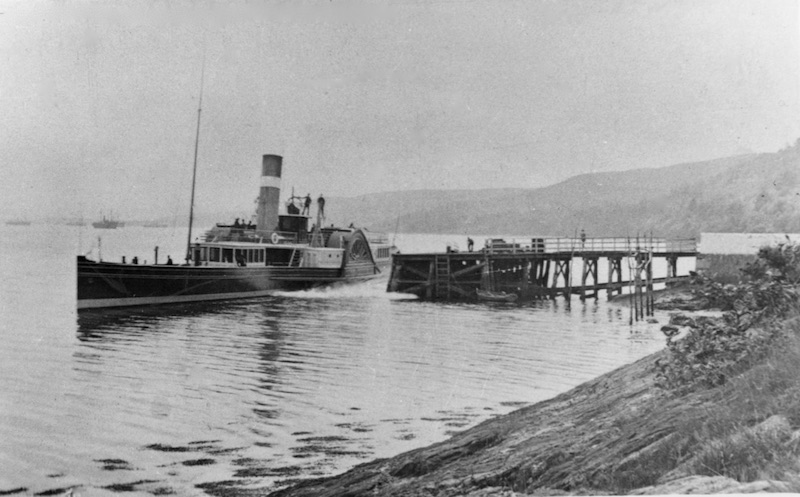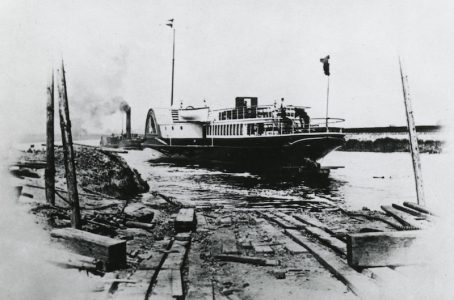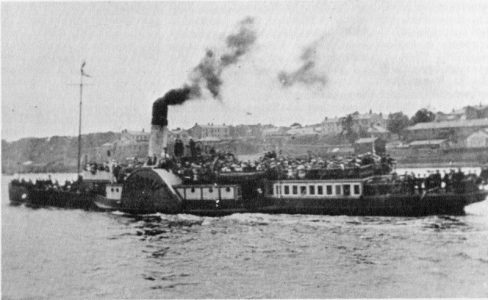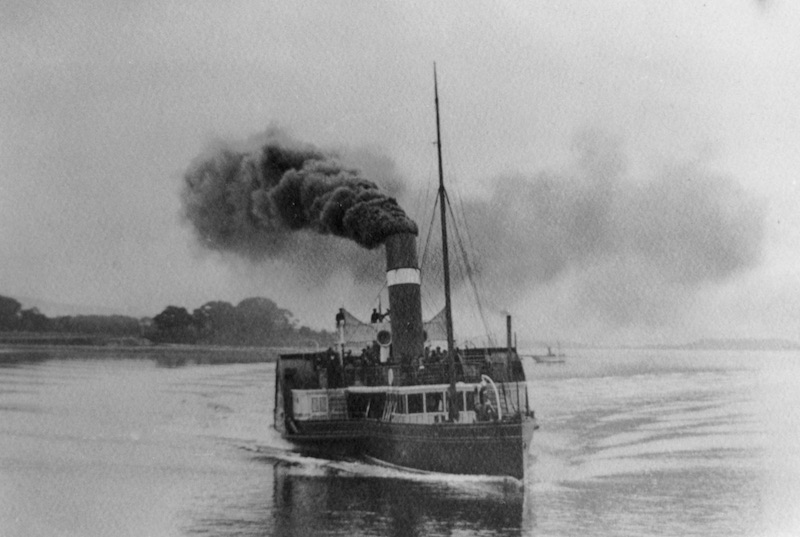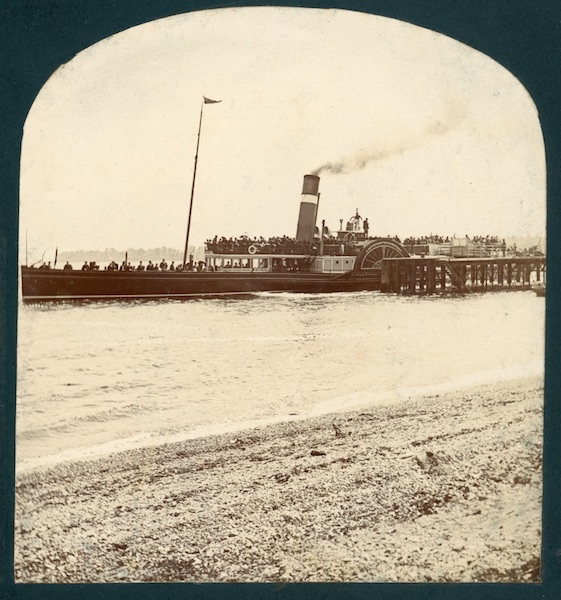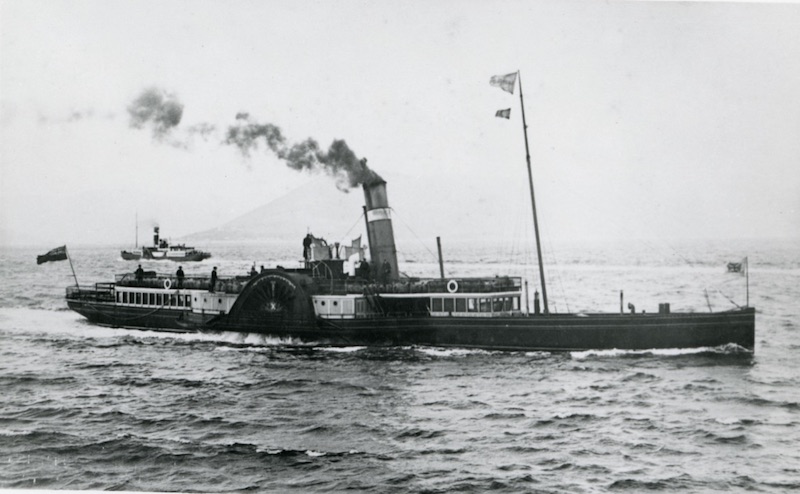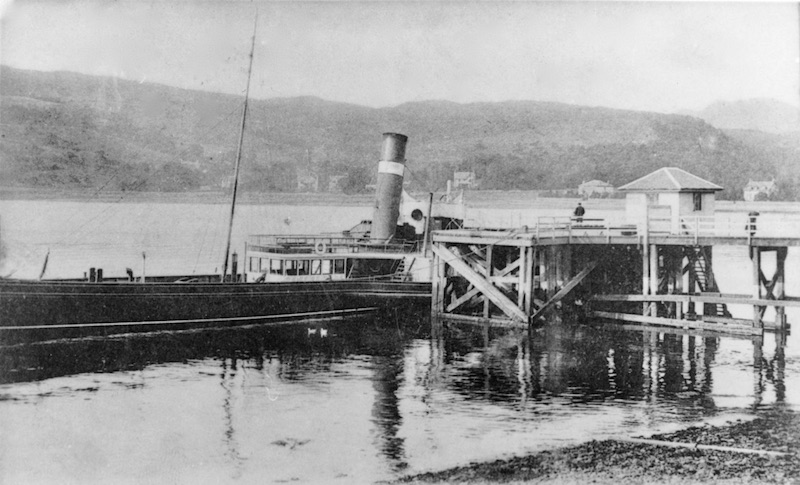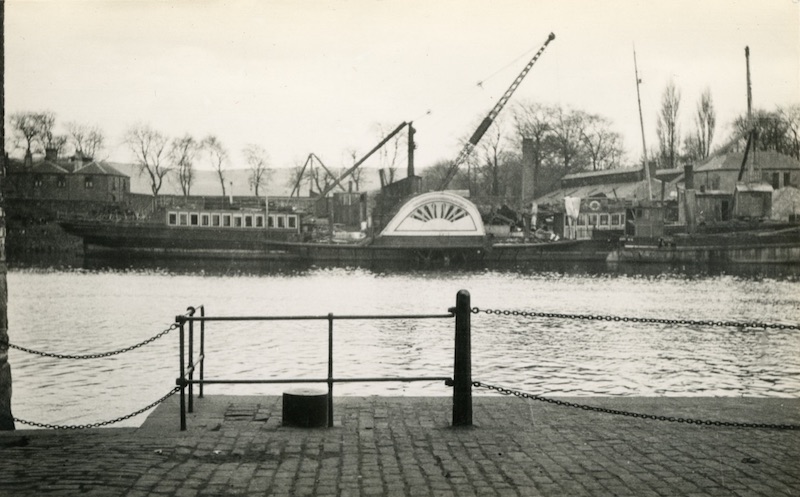In the third of this occasional series, looking back on ships that lent their owners special distinction, Stuart Craig chooses a surprising subject — but perhaps for good reason!
Lady Clare might seem a strange choice for ‘Pride of the Fleet’, but I have good reason — as you will find out later. She was no dashing, high profile mega-steamer. No, Lady Clare could be described as a shy, retiring little vessel, which rarely ventured further down river than Rosneath Point.
She was built in 1891 by J. MacArthur & Company of Paisley for the North British Railway Company’s service up the Gareloch from Craigendoran, and latterly Greenock.
A smaller version of Lucy Ashton but with equally neat proportions, she was 180 feet long with a beam of 19 feet.
She quickly settled into the role of servicing the eight piers between Garelochhead and Craigendoran.
Lady Clare was a pretty vessel, with a narrow fore saloon and a full-width saloon aft. The latter was fitted out in mahogany and satinwood with the upholstery dressed in velvet. Her ceilings were finished in ‘lincrusta’. (That I had to look-up! Lincrusta was a type of linoleum, used to cover and decorate ceilings and walls; it was all the rage in 1891).
Below the fore saloon was the dining room, which also served as the bar. She wore the traditional red, white and black of the North British on her single funnel, with black hull and white upper parts.
Lady Clare’s career on the Clyde was remarkably short of incident, and for that alone she deserves to be singled out: she simply went about her daily work, serving her public faithfully and rarely drawing attention to herself.
Her time under the NB flag was relatively short-lived, for in 1906 she was sold to the Moville Steamship Company for employment on Lough Foyle, based at Derry. Her duties included tendering to deep-sea passenger ships, which called off Moville on their way from Glasgow and Liverpool to the United States and Canada.
At the start of the First World War the transatlantic liners ceased trading and the little steamer was laid up.
In 1917 she was requisitioned by the Admiralty and converted to serve as a minesweeper, based at Belfast. She survived the hostilities unscathed and returned to Lough Foyle, sailing principally to Moville on the north shore but also visiting Portrush to the east. The liners returned but a change to immigration laws in 1925 led to a downturn in trade and Lady Clare was laid up at Derry.
There she remained for three years until she was towed back to the Clyde in March 1928 — to Dumbarton where, now in a sorry state, she was quickly broken up. Her operating company did not last much longer: the Moville Steamship Company went into liquidation the same year.
So why Lady Clare? Well, I think this wee steamer deserves her 15 minutes of glory on these web pages — oh, and my wife is called Clare, same spelling, though she never suits red, white and black.
This article draws on information in Geoffrey Grimshaw’s ‘From Mambeg to Moville’ in the 1973 edition of Clyde Steamers, CRSC’s annual magazine.
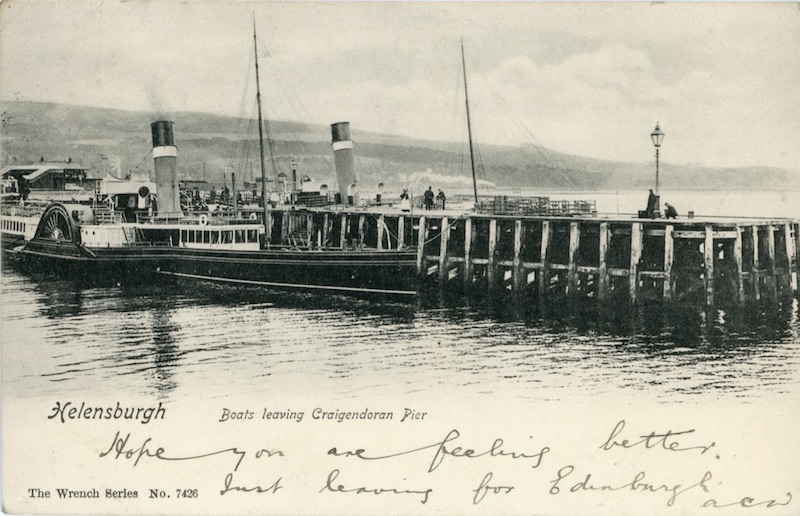
Lady Clare (left) was built for service out of Craigendoran, the North British railhead on the north bank of the Clyde.

As she will be best remembered: Lady Clare with a full head of steam and a good crowd on board. Copyright CRSC
Pride of the Fleet: SS Kintyre
Pride of the Fleet: PS Queen-Empress
Join CRSC now for £10 and receive all the benefits — discounted prices, exclusive magazines, special events, meetings, cruises.
Published on 20 August 2018












